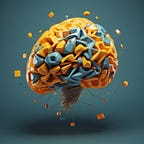Augmented Reality: Blurring the Lines Between Physical and Digital Worlds
In the ever-evolving landscape of technology, Augmented Reality (AR) has emerged as a transformative force, seamlessly integrating the digital and physical realms to create a new dimension of interaction.
Unlike Virtual Reality (VR), which immerses users in entirely digital environments, AR overlays digital information onto the real world, enhancing our perceptions and interactions with our surroundings. This fusion of realities is not just altering our personal experiences but is also reshaping industries, education, and social interactions.
The Genesis of AR
The concept of AR is not as modern as one might think. It traces back to the early 1960s, with Morton Heilig’s Sensorama, and later, Ivan Sutherland’s “Ultimate Display” in 1968, which could be considered the earliest form of AR technology. However, it wasn’t until the late 20th and early 21st centuries that AR began to gain traction, thanks to advances in computer vision, graphics, and mobile technology. Today, AR can be experienced through smartphones, tablets, and specialized AR glasses, making it more accessible than ever before.
Transforming Industries
One of the most profound impacts of AR is seen in various industries, from retail and real estate to healthcare and manufacturing. In retail, AR allows customers to visualize products in their own space before making a purchase, bridging the gap between online shopping and the in-store experience. Real estate agents and companies leverage AR to offer virtual tours of properties, enabling potential buyers to envision themselves in a space without physically being there.
In healthcare, AR provides revolutionary methods for training and surgery. Surgeons can use AR glasses to overlay critical information, such as the patient’s vital signs or 3D models of organs, directly onto their field of vision during procedures. Similarly, in manufacturing, AR assists workers in assembly lines by providing real-time data, guidelines, and error detection, thereby improving efficiency and precision.
Enhancing Education and Training
Education and training have been significantly enhanced with AR’s capability to provide immersive learning experiences. By overlaying digital information onto physical objects or environments, students can interact with complex subjects in a more engaging and intuitive way. AR applications can bring historical events to life, visualize scientific concepts, and simulate real-world scenarios for vocational training, making learning more interactive and impactful.
Social Connectivity and Entertainment
AR is not just about work and education; it extends into the realm of social connectivity and entertainment. Social media platforms have integrated AR filters and effects, allowing users to create and share content in fun and innovative ways. Gaming has also been revolutionized by AR, with games like Pokémon Go encouraging players to explore the real world to discover digital creatures.
Challenges and Ethical Considerations
Despite its potential, AR faces challenges and ethical considerations. Privacy concerns arise as AR applications may require access to sensitive data and cameras. There’s also the risk of digital overload, where the constant influx of information could lead to cognitive overload or distract from real-world interactions. Furthermore, the digital divide could widen, as those without access to advanced AR technologies might miss out on educational and professional opportunities.
Looking Forward
As AR technology continues to evolve, it promises to further blur the lines between the digital and physical worlds. With advancements in AI, machine learning, and hardware, future AR experiences will become more seamless and integrated into our daily lives. The potential for AR to enhance human capabilities, transform industries, and enrich personal experiences is immense, heralding a future where the boundaries between what’s real and digital become increasingly indistinct.
In the final analysis
Augmented Reality stands at the frontier of technological advancement, offering a glimpse into a future where the integration of digital information with the physical world opens up limitless possibilities. As we navigate this blended reality, the challenge will be to harness its potential responsibly, ensuring that it enhances rather than detracts from the human experience.
Want the latest articles delivered straight to your inbox? Subscribe now and never miss out!
